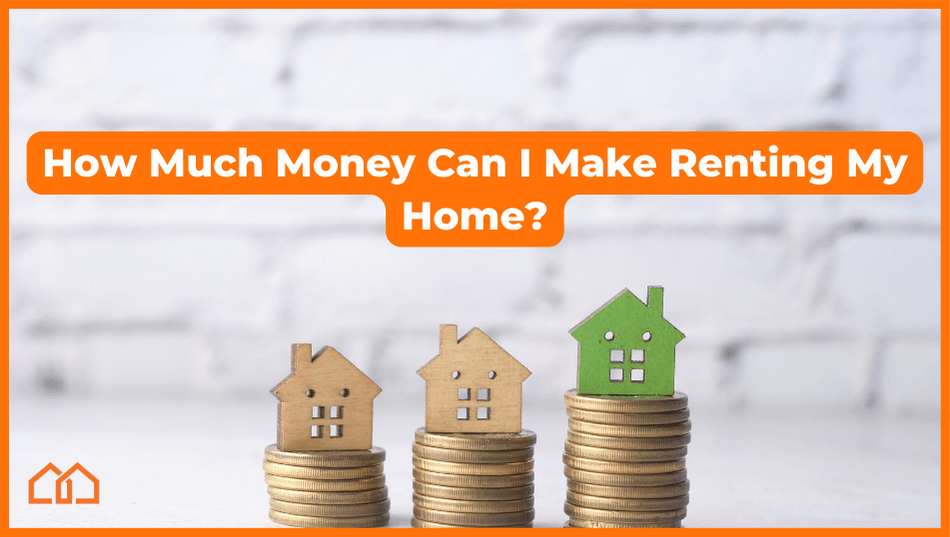Are you interested in renting out your home but not sure how much you can get for it? It can be intimidating to think about negotiating with tenants or knowing the proper market value. Maybe you’re concerned about finding professional help for renting out your home. There are plenty of costs and factors to think about. But there is hope for understanding just how valuable this type of investment can be.
If thoughts like these are living rent-free in your mind, then you have come to the right place. In this article, we will discuss how to determine the amount of money you can get by renting out your home.
How to Calculate How Much Rent to Charge for Your Property
Before you decide to rent out your property, you need to know how much rent you will be able to fetch for your home. To do this, you can make use of what realtors call the “1% rule.”
1% Rule
The 1% rule is quite easy to understand. It states that the monthly rent for your home should be 1% of its acquisition price. Keep in mind that the acquisition price is different from the purchase price of your house. Acquisition prices refer to the amount of money spent in buying the house and making it ready for occupation.
For instance, if you have bought a house for $100,000 and remodeled it by spending another $25,000, your acquisition price would be $125,000. According to the 1% rule, your monthly rent should be $1,250. It means that the annual income from the house will be $15,000, or 12% of your acquisition price. Therefore, you can get a 12% return on investment (ROI) from renting your home.
However, the 1% rule isn’t the only thing to abide by. This rule helps you get the monthly rent and an initial assessment of your annual income generated from the house, but it doesn’t take into account any other expenses or factors. This is where the “50% rule” comes in.
50% Rule
According to this rule, almost 50% of the rent you receive will go towards expenses, which include the maintenance costs, taxes, insurance, and losses for the months in which the house is unoccupied. It also includes property management costs, such as inspections, background checks on tenants, and others. Plus, you may also need to spend money on upgrading the house. Some examples include replacing the doors, fixtures, roof, HVAC system, etc.
You must also keep in mind that the 50% rule doesn’t factor in your mortgage, which means that it will be paid separately from the rent. Although the actual expenses may be less than 50%, the rule helps you get a good idea of how much profit you will make from the home.
Let’s get back to our previous example. If your monthly rent for the home is $1,250, it means that $7,500 of the $15,000 annual rent goes towards the expenses, without counting the mortgage.
We can safely assume that if your monthly rent is at least 1% of the acquisition price, renting out your property will yield a return of about 6%. Most people call this return their ‘cash flow’ from the property. If you keep these formulas in mind, you might be happy considering all the money you can make by renting out your home, but the realities might be different.
Understanding the Cash-On-Cash Return
As mentioned above, you may consider your cash flow to be the money you make from renting your property after deducting the mortgage. However, you also have to consider the expenses that we mentioned in the previous section. Even if the expenses of maintaining your house and paying taxes don’t amount to 50% of your annual rental income, you may still experience a negative cash flow.
Consider the example we used above. If the monthly rent you can get is $1,250 and we deduct 50% of it for expenses, you are left with $625. However, the mortgage for your property may be anywhere between $300 to $1,000, depending on the interest rate. If it is anything above $375, you will achieve a negative cash flow. Therefore, you may be spending more money to make the house suitable for renting than you earn from it.
If your house is mortgaged, you can make use of the cash-on-cash return formula to get an accurate picture of your income. Until now, we factored in the acquisition price of the property, which included the full property price and not your down payment. So, let’s revisit our formula once again.
Say you are buying a house for $100,000 and your mortgage is approved. All you need to seal the deal is to put down 20% of the property value, or $20,000. While keeping the monthly rent at $1,250, let’s suppose your mortgage payment is $400 per month, and you are left with $225 after deducting the mortgage and 50% expenses. This gives you a yearly cash flow of $2,700.
If you would calculate the ROI according to the purchase price, you get only 2.7%. However, when you factor in the down payment, you get a cash-on-cash return of 13.5%. Since your mortgage is being paid by the monthly rent, you will be able to recover your initial investment within 7-8 years. Plus, you won’t have to manage the house expenses or mortgage from your own pocket, which saves you money.
The Key Takeaway
Renting out your home can make for a wonderful way to make money. But there are several factors involved that are easy to miss. If you really want peace of mind while renting your home, you can leave the day-to-day and technical work to Marketplace Homes. We can help you find an experienced property manager who can ensure these details are handled.
Troy Evans is the Director of Investor Services at Marketplace Homes with a focus on business development and portfolio management across their nationwide portfolio. Troy previously held other positions in the past ten years at Marketplace Homes, including sales. With a passion for single family rentals, he is looking forward to helping establish Marketplace Homes as the go-to partner in the SFR and BFR industry.


